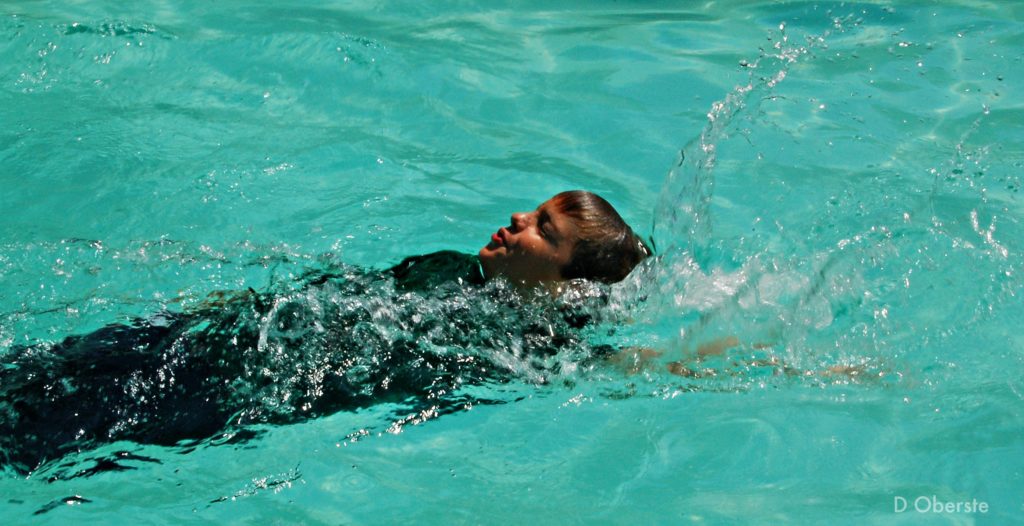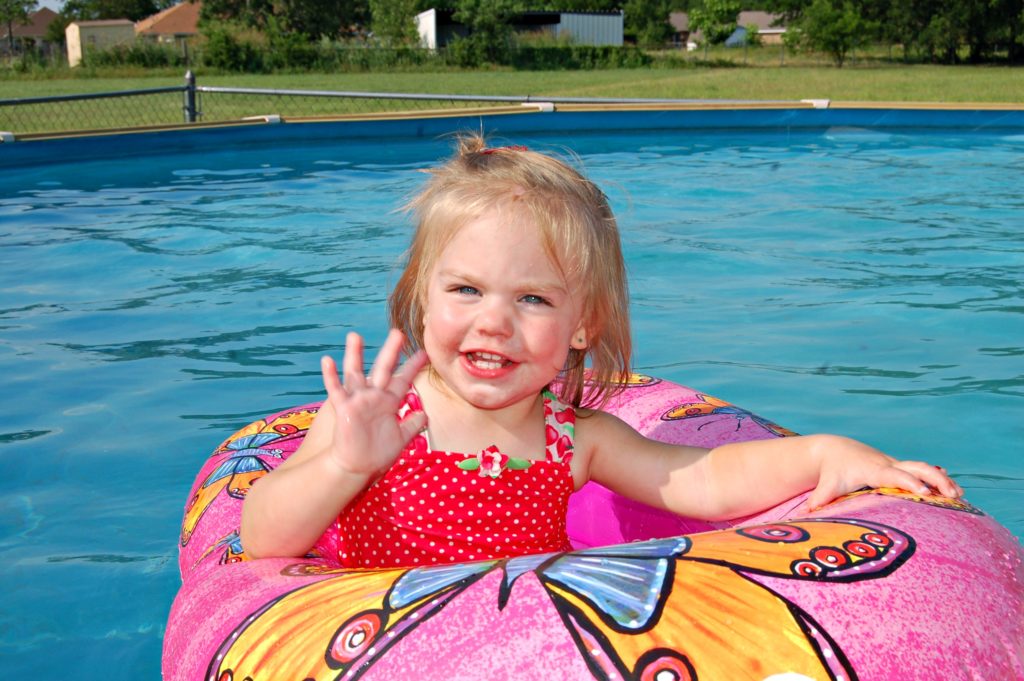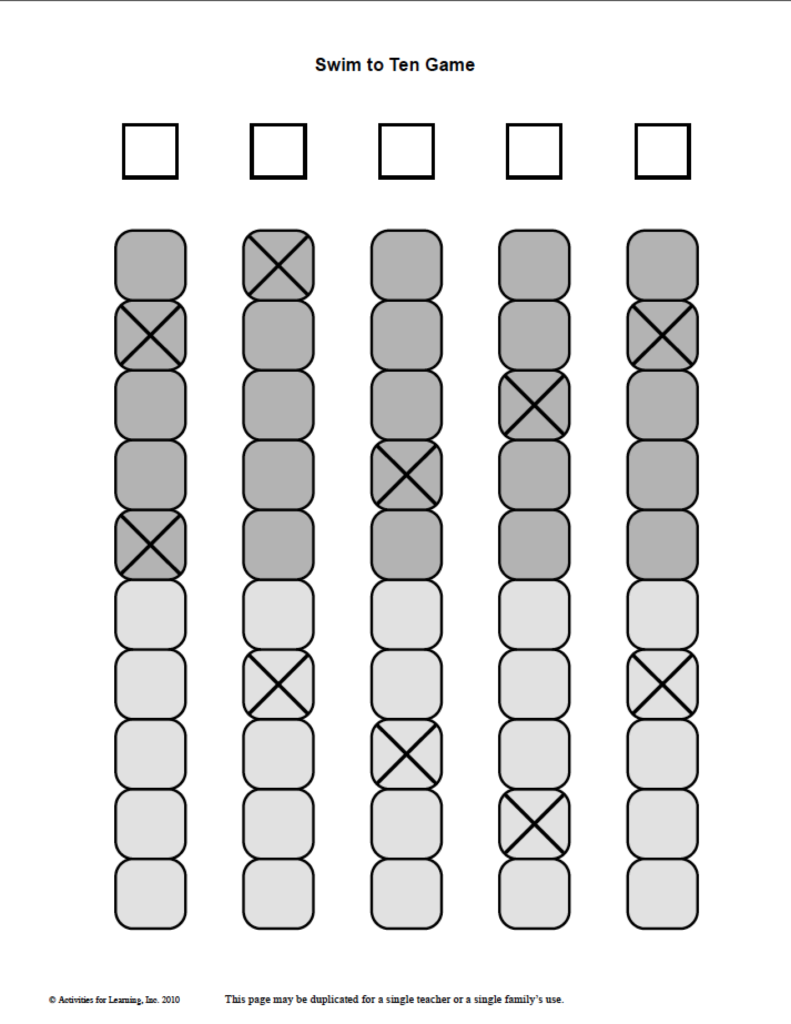When you think of summer what do you think of? My first thoughts are of swimming. Because I live in Texas where it is super-duper hot in the summer, swimming is a necessity. Well, maybe not a necessity, but it sure does make for a cooler summer.

I love the days when my 7, 5, and 4- year-old grandchildren come to visit and we can swim….. They bring the fun.

For this week’s RightStart™ math card game I couldn’t help but pick Swim to Ten, not only because it has the word swim in the title but because it just shouts “FUN MATH GAME.” It’s a simple game but can be adapted depending on the age and ability of your children.
Swim to Ten can be found in the Math Card Game book, game number N34. This game is a little unusual because it requires a board to play on.

This game will help your child make decisions based on mentally calculating moves and discovering that the largest number is not always the best number. It’s best to play with two people or two sets of teams. An older child can pair with a younger child or mom and dad can pair up with a child.
Game markers are also needed for this game. You can borrow a game marker from some other game or just use what you can find around the house. Each person needs two markers. From here on out, the game markers will be called swimmers.
You will also need a stack of Basic Number cards, but only use the numbers 1 through 5. If you don’t have basic number cards, you can take some small index cards or cut up paper and write the numbers on them. Ten of each number is sufficient.
The object of the game is to be the first player to get BOTH swimmers (your markers) to the end of the swim lane. But it’s not as simple as you think – the swimmers must end exactly on the last place!
To play the game:
- Shuffle the cards and lay face down in a stack.
- The first player or team turns over a card and moves one of their swimmers that many spaces. If you land on a space with an X you must go back to the starting block.
- If the child is young and isn’t good at visualizing yet or doesn’t have strong visualization skills yet, they are allowed to move both their swimmers to see which is the best move.
- If your child is able to visualize, the first swimmer touched is the one that must be moved.
- The winner is the first person who gets BOTH their swimmers on the last space.
Ways to adapt this game:
- If you have a child who could use some work on their math facts to ten, have them flip over a card and then tell you what number is needed to make ten.
For example, let’s say they flip over a 3. They tell you that a 7 will make ten. After they give the correct answer, they can move that number of spaces, 7 in this case. If needed, allow them to use the AL Abacus to help with their facts of 10.
- If you have a child who wants more challenging addition practice, take some of the Multiplication cards. Lay them in a pile face down, then flip over a basic number card along with a multiplication card. The child now adds the two together, gets the correct answer, then moves the quantity shown on the basic number card.
- Do the same, but now have the child subtract the basic card from the multiplication card.
- For the child who needs work on their multiplication, pick a number 1 through 10. When the basic number card is flipped over, multiply that number by their “assigned” number. For example, let’s say they are working on sixes. The child flip over a 3-card over. Multiply 6 × 3 or 3 × 6, giving the answer of 18.
If they are correct, they will move forward the number of spaces on the card. In this case, they would move 3 spaces. Of course, this will only cover the multiples from 1 to 5, but it’s a nice start.
Let’s SUMMERize
It’s summer! Take this game outside. Get the wiggles and giggles out while working on their math skills.
Make the board on your driveway, sidewalk, or patio using chalk. Or grab some yarn, string, or a can of spray paint and make the board in the grass. Don’t worry the grass will get mowed so your game won’t be there all year long! You can use sticks to mark the × in the squares. Either use bigger swimmer markers or let the child can be the swimmer!
Then, end the game with going for a swim! Or have a water balloon fight. Whatever you do, have fun! It’s summertime!!
